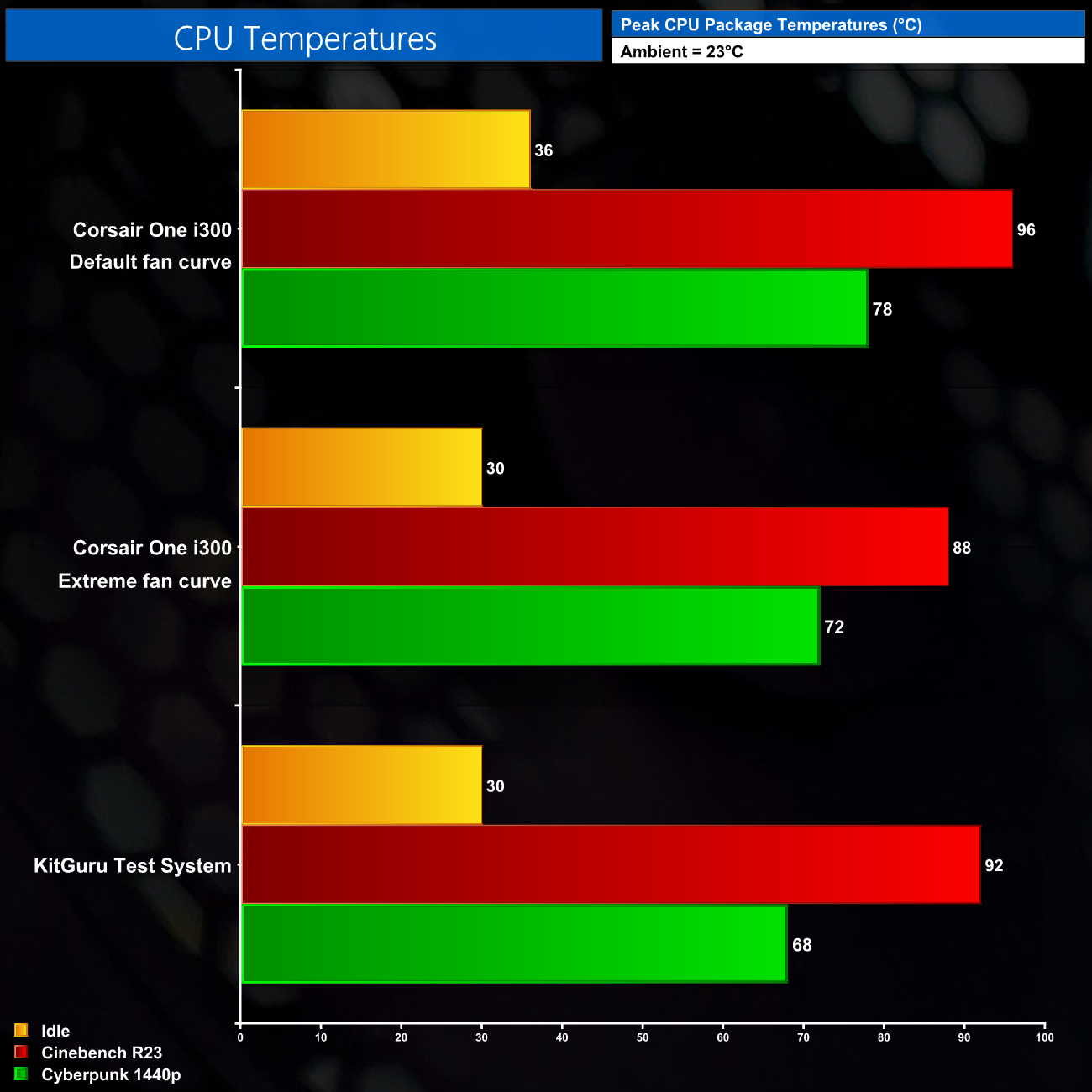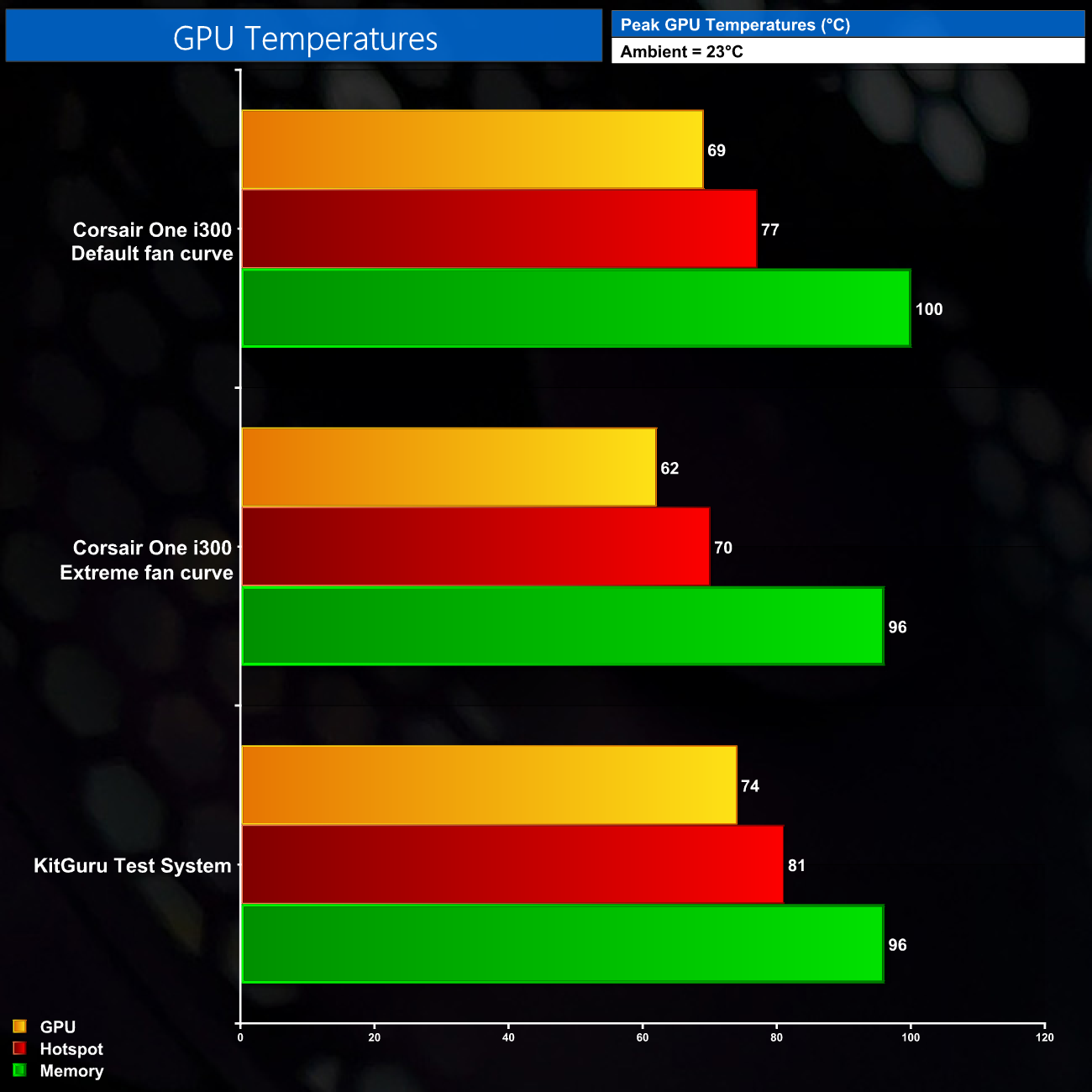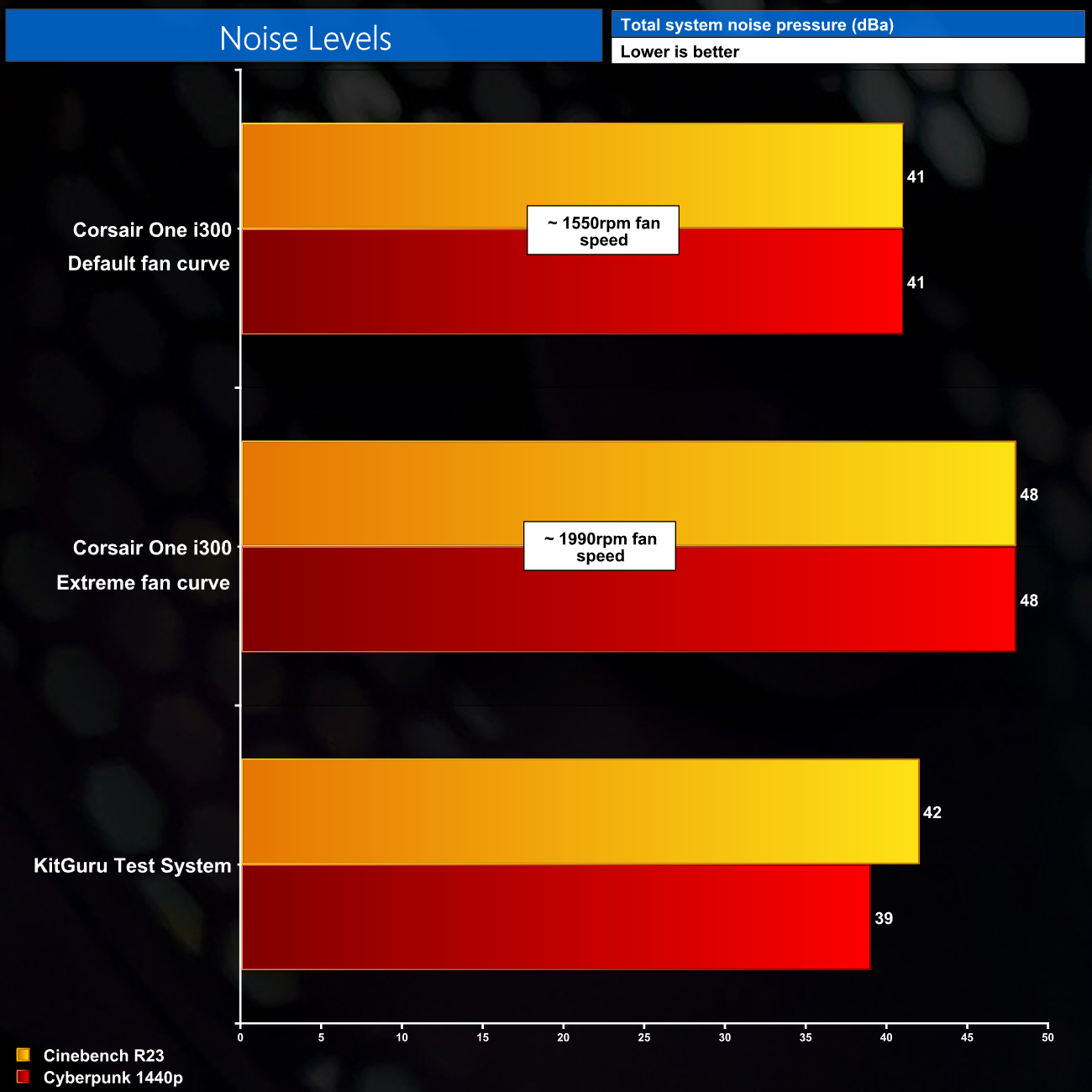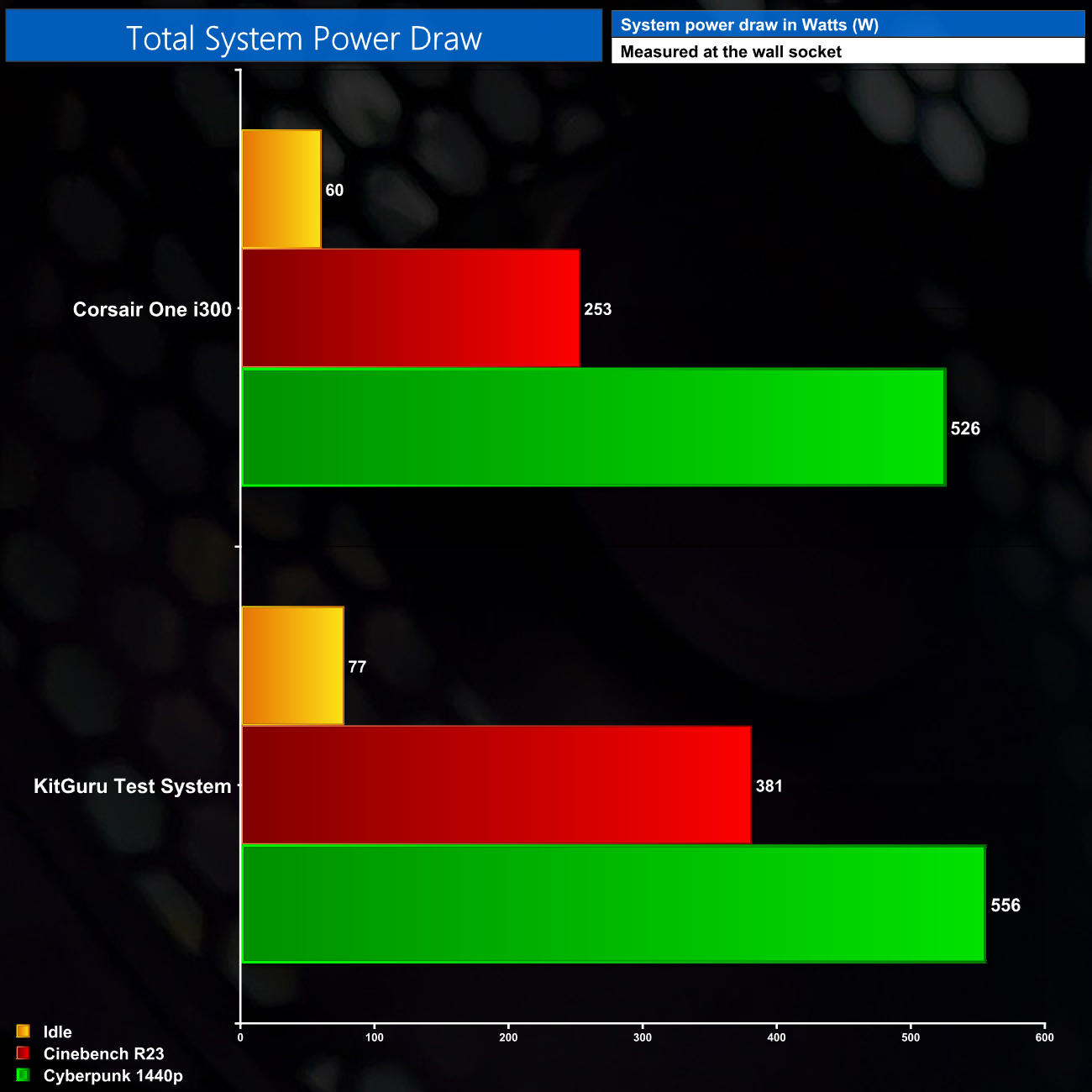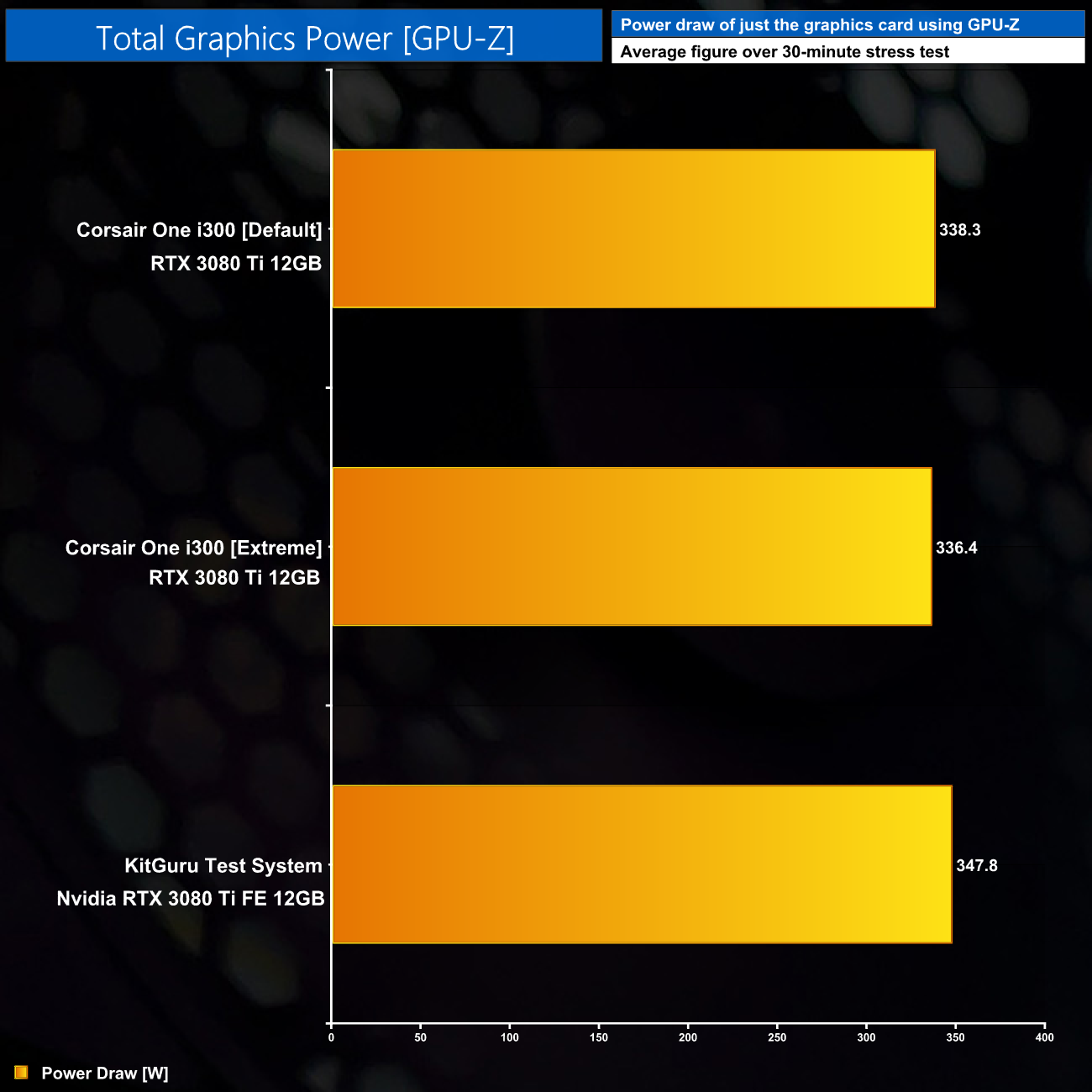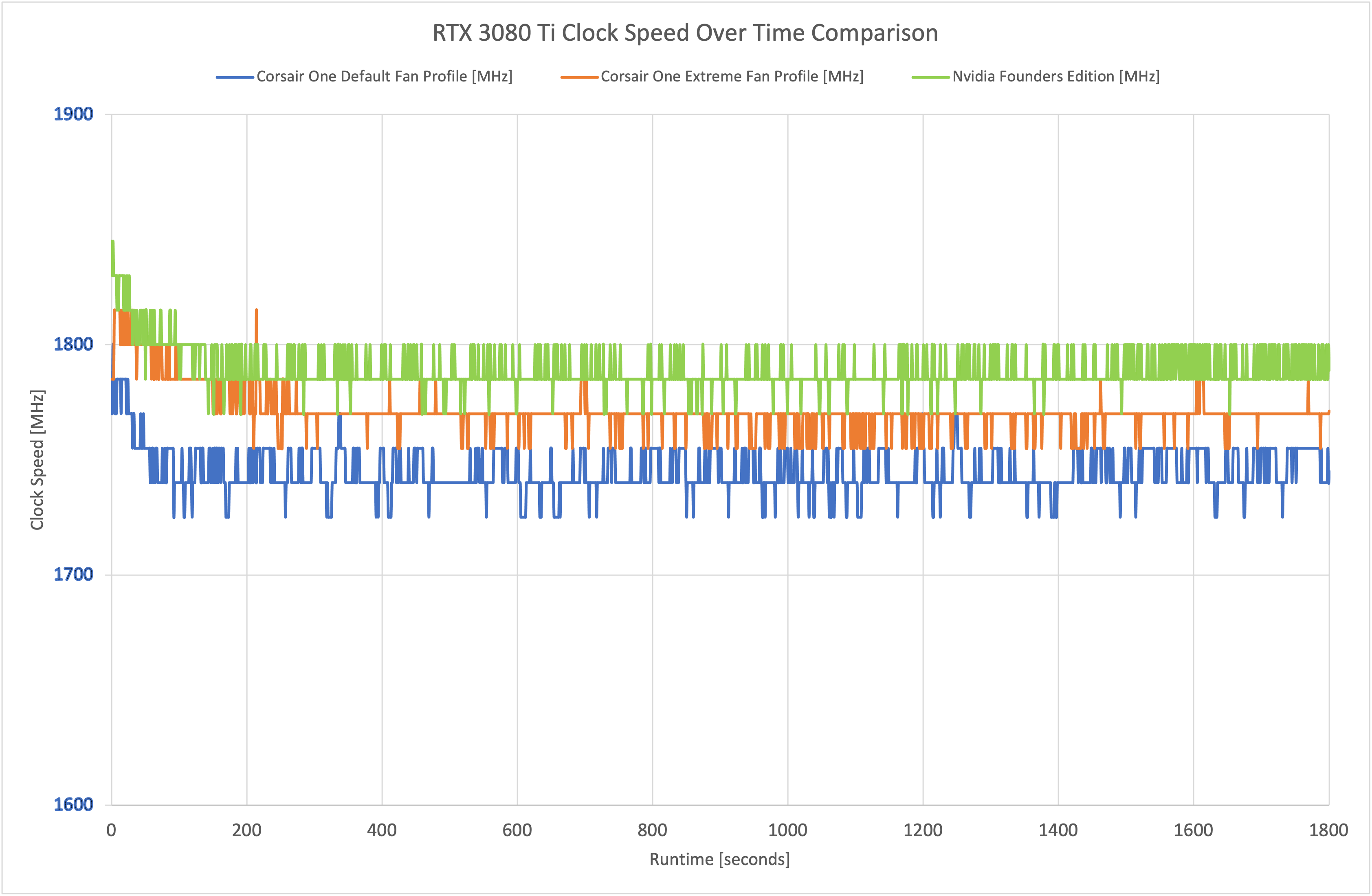Temperatures
As iCUE gives a choice of either the Default or Extreme fan profiles, we tested both to see the difference made. For the CPU, we observed a package temperature of 96C during Cinebench, which is certainly hot and not far off TJ Max. The Extreme fan profile reduces this to 88C, which is a bit more like it, though noise levels are much louder as we will see below.
Importantly however, the Default fan profile is absolutely fine for gaming, which is what the i300 is primarily intended for, as we saw a peak of 78C during a Cyberpunk stress test, while this was reduced by 6C using the Extreme mode.
As for the GPU, the thermal performance here really surprised me, as even using the Default fan profile, we saw a peak GPU temperature of 69C, with the hotspot at 77C – so the liquid cooling is clearly working.
Memory temperatures are more of a worry however, as the Default fan profile saw a maximum of 100C, which was reduced to 96C when using the Extreme profile. This is technically in spec, and the Nvidia Founders Edition shows similar GDDR6X temperatures, though the Founders cards are notorious for relatively poor memory cooling. It's just not quite as impressive as the GPU temperatures.
You can see why we preferred to use the Default fan profile for our testing when looking at the noise levels chart. This saw the fan operate at around 1550RPM and it was very easy on the ears. Switching to the Extreme profile however, cranked the fan speed up to 1990RPM, which is as fast as the fan will go, and it was raucous. If you're using a headset, it won't bother you, but if you set this up in a living room or shared space, you will definitely want to avoid this mode.
As for power draw, the Corsair One drew 253W under sustained load in Cinebench R23, which is about 130W less than our test system, which makes sense as the Corsair has a strict power limit in place. When gaming, this increased to just shy of 530W. This is comfortably within the range of the 750W power supply and ensures we have some headroom left over for any particularly demanding titles.
We did also use GPU-Z to record power draw of the graphics card only. This is done via software so it's not as accurate as our regular GPU power draw methodology but it gives us a general idea. Interestingly, both results from the Corsair One show the GPU not quite at its 350W power limit – the desktop 3080 Ti Founders Edition in our test system averaged just shy of 448W, compared to about 336W for the Corsair One. It's not a massive difference, but interesting to note.
That is also reflected in the operating clock speed, as the desktop Founders Edition consistently ran the fastest over our thirty minute stress test, hovering around the 1800MHz mark. The Corsair One using the Extreme profile was more like 1775MHz, with the Default profile slightly slower still, fluctuating at around 1740MHz. They're small differences but do explain some of the performance variation we saw on the previous page.
Be sure to check out our sponsors store EKWB here
 KitGuru KitGuru.net – Tech News | Hardware News | Hardware Reviews | IOS | Mobile | Gaming | Graphics Cards
KitGuru KitGuru.net – Tech News | Hardware News | Hardware Reviews | IOS | Mobile | Gaming | Graphics Cards


